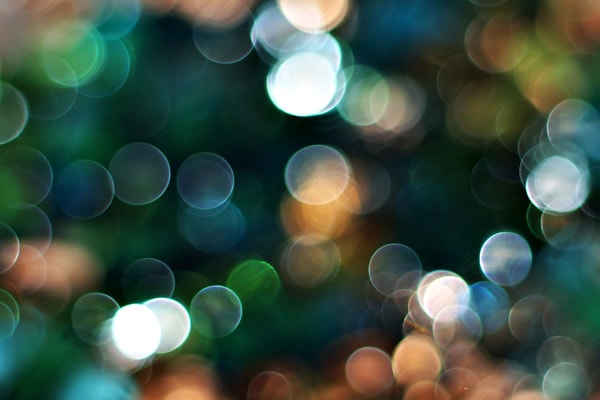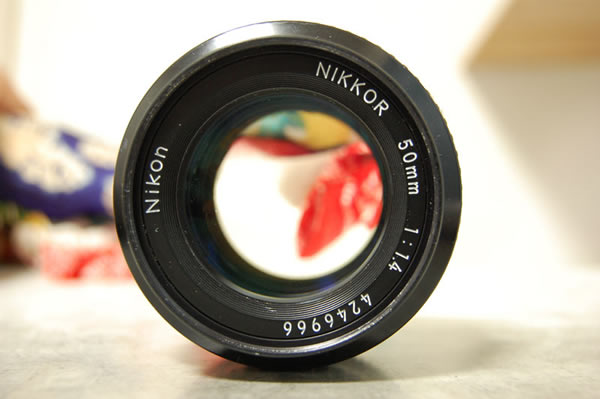How to Get Really Creative With Bokeh Photography
To say that bokeh photography is highly interesting would be the understatement of the century. The word “bokeh” itself is Japanese in origin, and it refers to the aesthetic quality of an image’s blur, which is found in the out-of-focus area of the picture. Essentially, it’s the way in which your lens renders points of light that are out of focus.
It’s important to note that there can be both good and bad bokeh, defined exclusively by how pleasing to the eye the blur in an image is to the eye. Therefore, when it comes to this genre of photography, a fair amount of your success depends on the shape of the aperture and any optical aberrations in your lens.

image by Pranav Yaddanapudi
Bokeh takes place in parts of the scene that are found outside the depth of field. As a result, some photographers sometimes utilize a purposely shallow focus method to produce photos that feature out-of-focus areas that are very prominent to the eye. If done properly, bokeh photography is a visual feast for your eyes.
Getting highly creative with it ensures that your bokeh photos will be exceptionally memorable.
Christmas Lights for Bokeh: It’s Magic
You have the ability to make your very own bokeh images that will have all your friends doing double takes. The best news is that you don’t even have to leave your own home to produce exceptional bokeh images. All you require are Christmas lights and an indoor environment that doesn’t have sources of light best suited for bokeh.
Don’t wait around for Christmas time to try your hand at this bokeh technique! Just dust off the old Christmas lights from the closet, and get started.
Requirements

picture by musume miyuki
The perfect lens – The perfect lens for this situation is any lens with a really wide aperture, like f/1.8 or even f/1.4.
Examples of lenses that are well-suited for this exercise in highly creative bokeh photography include the Canon 50mm f/1.8, the Nikkor 50mm f/1.8 and the Nikkor 50mm f/1.4.
Technically, it’s entirely possible to still produce bokeh images with a lens that’s f/2 or smaller. Just know that the quality and size of your bokeh effect will be impeded.
- Christmas lights – You don’t need to be choosy about the number of lights in your strand or whether they’re color or clear lights. Working lights of any color will do just fine.
- Tripod – This accessory is completely optional. Of course, having a tripod around ensures stability, which you should strongly consider if you know that your hands are shaky.
- Flash – Again, the flash is entirely optional here, but it really helps to illuminate your images and any bokeh in them.
The Setup
This is the easiest part of the process: Just set up your camera like you usually do when you’re taking indoor shots, but with one, important difference.
Make sure that you adjust the aperture of your camera to its widest possible setting. Ideally, you want an aperture setting of f/1.8 or f/1.4 (or even wider like f/1.2), all depending on the exact type of lens you have, of course.
The Flash
If you decide to go with a flash, set it up so that it’s off your camera and directed at the subject. If the location where your subject will be features reflective lighting, you could direct the flash at the background, too, in order to produce bokeh from the light’s reflection coming from those surfaces.
The Christmas Lights
Now’s the time for the stars of your whole creative-bokeh photography exercise: the Christmas lights! Set them up by making sure you spread them out equally over the background that you have in mind; an alternative would be to just go with your gut and set them up according to your whim.
Should you not devise a way to successfully prop up your lights, you can always utilize a regular, old bookshelf and rely on binder clips to secure your lights onto the shelves.
The Subject
As with any photography project, your subject is vital to the success of your images, so spend some time in setting up your subject for your bokeh effect, whatever the subject may be.
Shooting indoors, your subject will likely be small and something that can be neatly placed on a table or other surface. Examples would include a paper clip, an open book, a mug and even a piece of a puzzle.
Some photographers are partial to positioning their subject between 4 and 5 feet in front of their Christmas lights. The farther you position your lights away from the subject, the smaller the bokeh effect will appear in the images. The closer your subject to the lights, the bigger the bokeh effect will appear in your shots. At the end of the day, it all comes down to personal preference: Do you want smaller or bigger bokeh in your pictures?
The Lens
If you’re not utilizing a fixed lens, be sure to zoom in your lens all the way. Photographers with experience in bokeh find that they’re able to obtain a superior bokeh effect this way than if they don’t zoom in. It should also be pointed out that, if you do zoom in with your lens, you can usually get away with setting your aperture at f/4.5 instead of f/1.8 or f/1.4.
The Finesse of Focusing
You’re almost at the point where you can check out the results of your bokeh experiment! Now, all you’ve got to do is master the finesse of focusing in on the subject just right.
It’s recommended that you stay quite close to your subject. If you don’t, your bokeh’s going to look noticeably smaller, thereby reducing its dramatic and interesting effect somewhat. However, this is a matter of preference: If you like smaller and finer bokeh, then feel free to shoot from farther away.
The Satisfaction of Shooting the Image
At this point, you’ve crossed all your proverbial “t”s and dotted all your proverbial “i”s. The only thing left to actualize your meticulous setup and preparation is to finally click the shutter—so go on! As you gaze upon your images, you can appreciate the creativity behind this technique.
After all, you just produced one of the more artistic and innovative shots in all of photography. You just created indoor bokeh with the help of some ordinary Christmas lights!
Bokeh Photography: Creativity to the Power of Ten
Bokeh epitomizes how photography can be used to really achieve a more sophisticated art form. You’re not just simply taking pictures of subjects and then seeing how they turn out!
You’re actively incorporating highly unique effects into your shots and also making intelligent use of the blur that’s a natural part of taking pictures. So play around and experiment with this bokeh effect until you come up with shots that are truly mesmerizing.
Your Turn To Talk
Have you ever tried bokeh photography before? Do you have your own special tips on how to get the most stunning bokeh effects in your images? Feel free to share what you know via Twitter or Facebook! Oh yeah, and be sure to make Contrastly your one-stop shop for all your photography needs.
